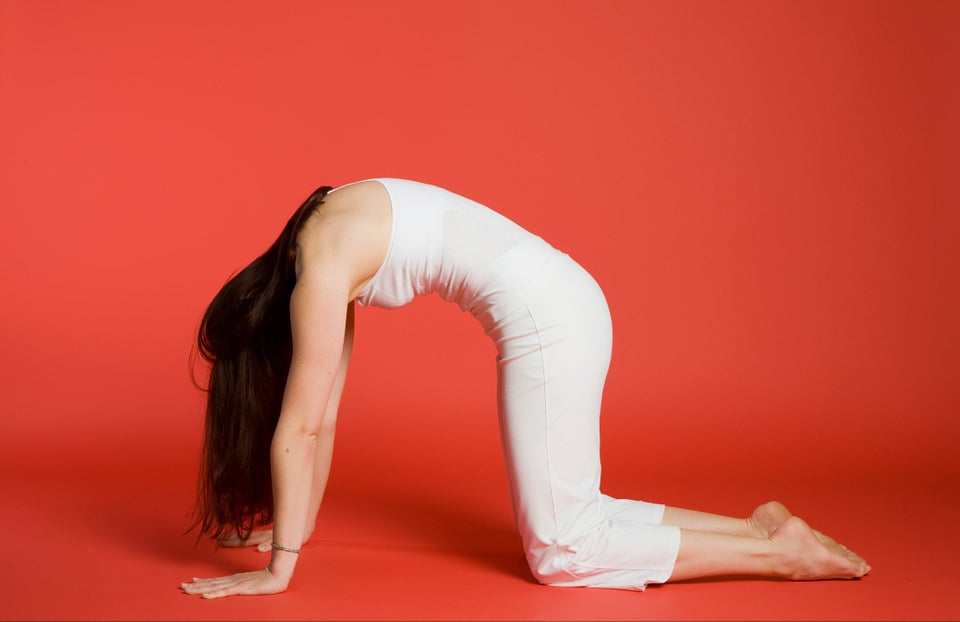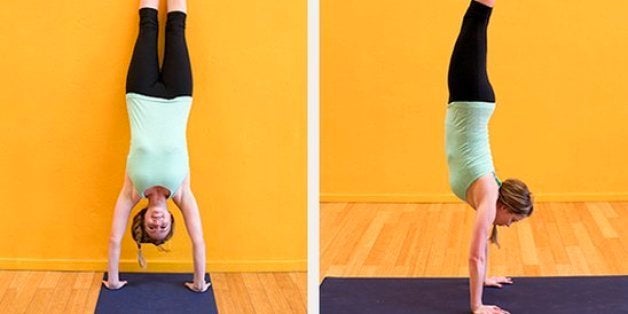
![]()
By Nick English
Photos by Heather Gene
What does it mean to be fit? Think about it. Is it the ability to run a 5K? Perform a pull-up? Maintain a six-pack? The answer varies from person to person, but the best definition might come from Greatist expert and doctor of physical therapy, Eugene Babenko: "The fitter you are, the more you can control your body, and the more prepared you are for the unexpected." Few skills hone these qualities as well as the handstand -- and the fact that it's the world's coolest-looking exercise is a nice bonus, too!
Handstand At Attention!
Coolness aside, a proper handstand is a symphony of strength, balance, coordination and proprioception -- which means it improves one's awareness of one's own body.
That's a big deal: Training the body to become better aware of where it's located in space comes with a whole range of benefits. Not only does it reduce the risk of injury (ankle sprains, for instance, are often linked to poor proprioception in the lower body), but it's even been shown to improve intelligence. Seriously! A recent German study found that after only two sessions of balance training (which improves the brain's ability to monitor proprioception), the brain started to develop new grey matter, which is linked to improved memory, attention span and learning abilities.
All of those superhuman balance benefits are great, but handstands are also a kick-ass strength training exercise. Just about every muscle in the body needs to work together to maintain a handstand, but it's especially good for strengthening the core and developing strong, stable shoulders. According to Babenko, these benefits have huge carryover to weightlifting and general physical ability, and perhaps surprisingly, handstands run a very low risk of injury -- so long as you don't fall too hard!
How To Train For A Handstand
First, you’ll need some nice, strong shoulders. In Babenko's opinion, the best exercise for handstand prep is the shoulder press: Add 3 sets of 10 to your workouts until you're pressing at least half of your bodyweight. Simple exercises like push-ups, pike push-ups and especially pike ups on a Swiss ball are great supplements, and a would-be handstand practitioner should get plenty of experience with long, steady planks.
While working on strength, it's wise to start honing balance, too. Consistency is super-important, here. The best way to advance in handstand prep is to practice every day, if only for five minutes. Unlike straightforward strength training, which requires plenty of rest and recovery, working up to a handstand fits more neatly into skill training, and can be practiced more frequently. As always, listen to your body and take a break if it feels necessary.
Your Yoga-Based Handstand Prep
Greatist expert and celebrity trainer Jonathan Angelilli feels that yoga's a great way to build the right foundation. Follow the training plan below and progress to the next exercise when it becomes relatively easy to hold the pose for a minute or two. You'll be rock solid in a matter of weeks!
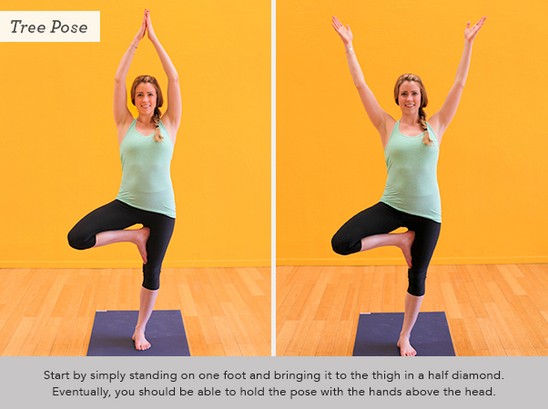

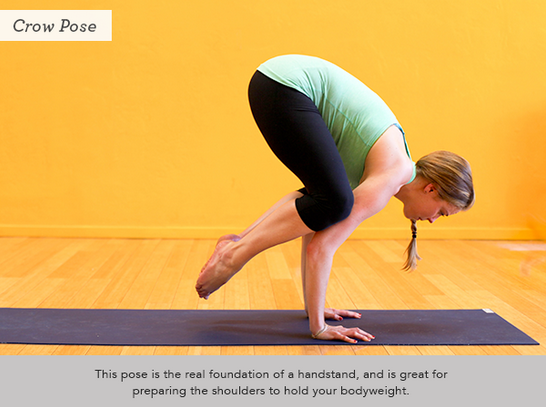
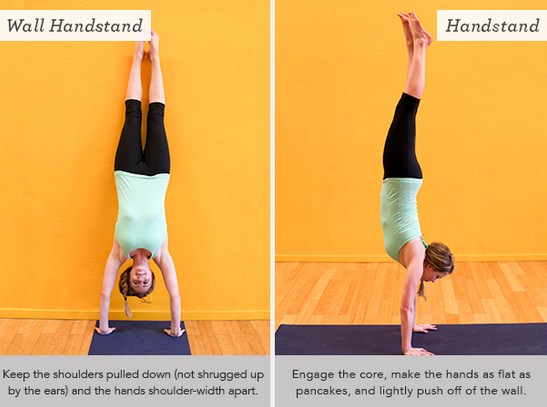
Remember to keep the eyes focused between the hands, try keeping the index fingers parallel, and, perhaps most importantly, don't forget to breathe calmly and deeply.
Congratulations! You are now reveling in glorious, freestanding handstandom. Practice regularly and the next step will be handstand push-ups -- but we'll leave that to you!
